Laser Cooling
Definition: a variety of techniques for reducing the temperature (i.e., the random motion) of small particles such as atoms or ions
More specific terms: Doppler cooling, Sisyphus cooling, optical refrigeration
German: Laserkühlung
Categories: quantum optics, methods
How to cite the article; suggest additional literature
Author: Dr. Rüdiger Paschotta
In this article, laser cooling is not meant to be the cooling of lasers (→ laser cooling units), but rather the use of dissipative light forces for reducing the random motion and thus the temperature of small particles, typically atoms or ions. Depending on the mechanism used, the temperature achieved can be in the millikelvin, microkelvin, or even nanokelvin regime. A totally different kind of laser cooling, where macroscopic samples are cooled, is treated in a separate article on optical refrigeration.
Methods of Laser Cooling
A simple scheme for laser cooling is Doppler cooling, where light forces are exerted by absorption and subsequent spontaneous emission of photons and the rate of these processes depends on the velocity of an atom or ion due to the Doppler shift. For example, a beam of atoms in a vacuum chamber can be stopped and cooled with a counterpropagating single-frequency laser beam, the optical frequency of which is first chosen to be somewhat higher than the atomic resonance, so that only the fastest atoms can absorb photons. Subsequently, the laser frequency is reduced so that slower and slower atoms participate in the interaction, and finally all atoms have a greatly reduced speed (at least in one dimension). This corresponds to a lower temperature, assuming that thermal equilibrium can be re-established.
Doppler cooling can also be used in an optical molasses [3] for damping the atomic motion in one to three spatial dimensions.
The method of Doppler cooling is limited in terms of the reachable temperature (→ Doppler limit). There are other methods, most notably Sisyphus cooling, which allow one to get substantially below the Doppler limit, down to the much lower recoil limit associated with the recoil momentum related to the absorption or emission of a single photon. Even the recoil limit is not the final one: specifically the method of velocity-selective coherent population trapping [5] allows sub-recoil temperatures in the nanokelvin regime.
Another technique is evaporative cooling, where the capturing potential in an atom or ion trap is gradually reduced so that the fastest particles can escape, and the average energy of the remaining particles is reduced. Subsequent collisions can re-establish a thermal equilibrium, corresponding to a reduced temperature.
Applications
Some examples of applications of laser cooling are:
- high-resolution spectroscopic measurements (e.g. for frequency standards in optical clocks based on ultracold ions or atoms) by the elimination of Doppler broadening
- studying the behavior of ultracold gases, which can exhibit interesting phenomena such as Bose–Einstein condensation (BEC), for example
- quantum optics research and applications in quantum information technology (e.g., quantum computing)
- ultraprecise measurement of gravitational fields (used e.g. for gravitational physics or for oil field exploration), based on the Doppler shift of free-falling cooled atoms, on Bloch oscillations
- lithography with cold atomic beams to form very accurately controlled structures
In 1997, the Nobel Prize in Physics was awarded to Steven Chu, Claude Cohen-Tannoudji and William D. Phillips, for the development of methods to cool and trap atoms with laser light. Important early contributions to this field were also brought by Theodor W. Hänsch [1], Nobel Prize winner in 2005 (for other achievements).
Suppliers
The RP Photonics Buyer's Guide contains 3 suppliers for laser cooling and trapping systems. Among them:

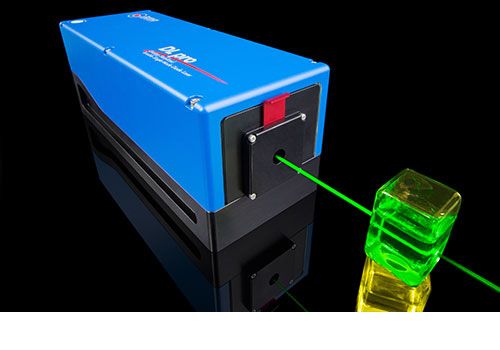
TOPTICA Photonics
Atom optics is a challenging field for laser applications. Special or even customized lasers are needed with always changing demands according to the newest scientific research topics. TOPTICA is key supplier of such laser systems not only to Nobel Laureates but also to most research groups all around the world. Since more than a decade, we are well known for the quality of our products always at the front line of research and for our flexibility.

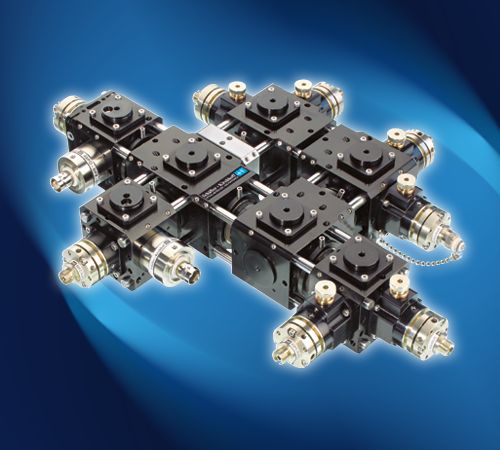
Schäfter + Kirchhoff
Schäfter+Kirchhoff offers fiber port clusters, which are compact,rugged opto-mechanical units that combine two fiber-coupled sources with same wavelengths and then splits the combined radiation into multiple output fiber cables with high efficiency and variable splitting ratio.

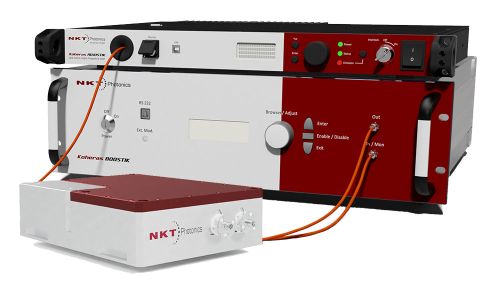
NKT Photonics
Laser cooling and trapping is the ability to cool atoms down to unprecedented kinetic temperatures, and to confine and support isolated atoms in “atom traps”. This unique new level of control of atomic motion allows researchers to study the behavior of atoms and quantum mechanical properties. Our Koheras lasers are ideal for resonant laser cooling where a very precise wavelength is required to match a specific atomic/ion transition.
Questions and Comments from Users
Here you can submit questions and comments. As far as they get accepted by the author, they will appear above this paragraph together with the author’s answer. The author will decide on acceptance based on certain criteria. Essentially, the issue must be of sufficiently broad interest.
Please do not enter personal data here; we would otherwise delete it soon. (See also our privacy declaration.) If you wish to receive personal feedback or consultancy from the author, please contact him e.g. via e-mail.
By submitting the information, you give your consent to the potential publication of your inputs on our website according to our rules. (If you later retract your consent, we will delete those inputs.) As your inputs are first reviewed by the author, they may be published with some delay.
Bibliography
| [1] | T. W. Hänsch and A. L. Schawlow, “Cooling of gases with laser radiation”, Opt. Commun. 13, 68 (1975), doi:10.1016/0030-4018(75)90159-5 |
| [2] | D. J. Wineland and W. M. Itano, “Laser cooling of atoms”, Phys. Rev. A 20 (4), 1521 (1979), doi:10.1103/PhysRevA.20.1521 |
| [3] | S. Chu et al., “Three-dimensional viscous confinement and cooling of atoms by resonance radiation pressure”, Phys. Rev. Lett. 55 (1), 48 (1985), doi:10.1103/PhysRevLett.55.48 |
| [4] | S. Stenholm, “The semiclassical theory of laser cooling”, Rev. Mod. Phys. 58, 699 (1986), doi:10.1103/RevModPhys.58.699 |
| [5] | A. Aspect et al., “Laser cooling below the one-photon recoil energy by velocity-selective coherent population trapping”, Phys. Rev. Lett. 61 (7), 826 (1988), doi:10.1103/PhysRevLett.61.826 |
| [6] | P. D. Lett et al., “Optical molasses”, J. Opt. Soc. Am. B 6 (11), 2084 (1989), doi:10.1364/JOSAB.6.002084 |
| [7] | F. Diedrich et al., “Laser cooling to the zero point of energy”, Phys. Rev. Lett. 62 (4), 403 (1989), doi:10.1103/PhysRevLett.62.403 |
| [8] | J. Dalibard and C. Cohen-Tannoudji, “Laser cooling below the Doppler limit by polarization gradients: simple theoretical models”, J. Opt. Soc. Am. B 6 (11), 2023 (1989), doi:10.1364/JOSAB.6.002023 |
| [9] | M. Kasevich and S. Chu, “Laser cooling below a photon recoil with three-level atoms”, Phys. Rev. Lett. 69 (12), 1741 (1992), doi:10.1103/PhysRevLett.69.1741 |
| [10] | H. Katori et al., “Magneto-optical trapping and cooling of strontium atoms down to the photon recoil temperature”, Phys. Rev. Lett. 82 (6), 1116 (1999), doi:10.1103/PhysRevLett.82.1116 |
| [11] | T. Binnewies et al., “Doppler cooling and trapping on forbidden transitions”, Phys. Rev. Lett. 87 (12), 123002 (2001), doi:10.1103/PhysRevLett.87.123002 |
| [12] | U. Vogl and M. Weitz, “Laser cooling by collisional redistribution of radiation”, Nature 461, 70 (2009), doi:10.1038/nature08203 |
| [13] | E. S. de L. Filho et al., “Laser-induced cooling of a Yb:YAG crystal in air at atmospheric pressure”, Opt. Express 21 (21), 24711 (2013), doi:10.1364/OE.21.024711 |
| [14] | M. G. Raizen et al., “Magneto-optical cooling of atoms”, Opt. Lett. 39 (15), 4502 (2014), doi:10.1364/OL.39.004502 |
| [15] | J. Knall et al., “Laser cooling in a silica optical fiber at atmospheric pressure”, Opt. Lett. 45 (5), 1092 (2020), doi:10.1364/OL.384658 |
| [16] | C. Savage, “Introduction to light forces, atom cooling, and atom trapping”, http://arxiv.org/abs/atom-ph/9510004 |
| [17] | The Nobel Prize in Physics 1997, https://www.nobelprize.org/prizes/physics/1997/, awarded to Steven Chu, Claude Cohen-Tannoudji, and William D. Phillips; see also the Nobel Lectures of S. Chu, “The manipulation of neutral particles”, C. N. Cohen-Tannoudji, “Manipulating atoms with photons”, and W. D. Phillips, “Laser cooling and trapping of neutral atoms” |
See also: light forces, Doppler cooling, Doppler broadening, optical molasses, Sisyphus cooling, optical frequency standards, optical clocks, optical refrigeration
and other articles in the categories quantum optics, methods
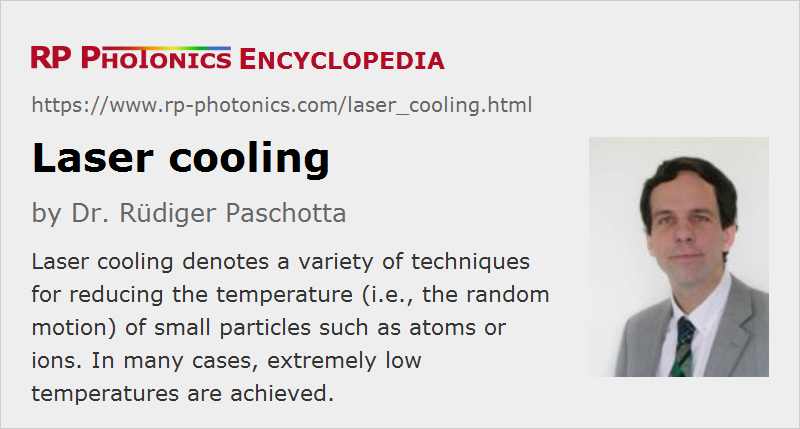 |




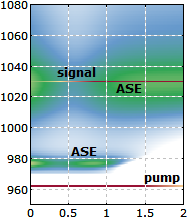


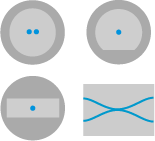

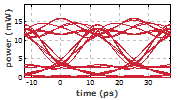
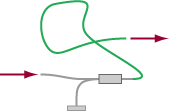
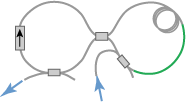
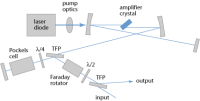

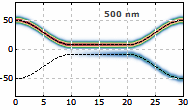
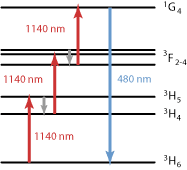

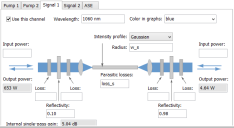
If you like this page, please share the link with your friends and colleagues, e.g. via social media:
These sharing buttons are implemented in a privacy-friendly way!